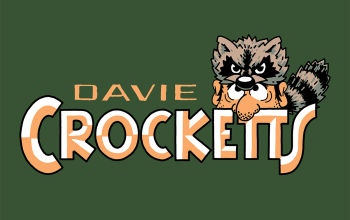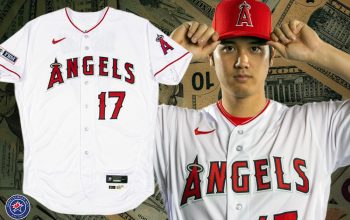The city of Bowling Green, Kentucky, has had a long love affair with all things automotive. First and foremost, it is home to the Bowling Green Assembly Plant, which produces Chevrolet’s Corvette. The city’s association with the iconic sports car is so close that the National Corvette Museum has been located there since 1981.

In 2009, the Columbus (Georgia) Catfish, a Single-A affiliate of the Tampa Bay Rays, moved to Bowling Green. Given the city’s relationship with the famous car and the name of their baseball team’s parent club, there was one obvious, slam dunk name for the new team—the Bowling Green Stingrays. It’s perfect, right? The Rays. The Corvette Stingray. Except one thing.
“Minor league baseball has a rule against naming a team after a corporation or a corporate association,” said Jason Klein of the prolific design firm Brandiose, who created the logo. “So that got shot down.”
But Bowling Green is about more than just Corvette. It’s about all sort of automotive stuff. “There’s a lot of companies here that are all hot rod based,” said Adam Nuse, the team’s general manager. “There’s a lot of industry here in Bowling Green centered around the race car.”
That industry includes—to name a few examples—assembly plants for several auto makers, auto parts manufacturers, and an annual gathering of hot rod enthusiasts, the next of which will take place in June 2016 at the city’s Beech Bend Raceway.
So fans in Bowling Green chose the name Hot Rods—a more generic (non-corporation specific) term for souped-up sports cars, some of them dating back to the 1930s, usually with red and yellow flames painted on them.
The Hot Rods’ logo features a vehicle with accentuated features—a caricature of a fancy race car. “There are so many things—you think about big tires, you think about flames and a grill,” Klein said. “Everything after that is really secondary.”
The colors reflect the decorations on hot rod vehicles, with silver thrown in to reflect metallic tail pipes. The red is also a wink and a nod to nearby Western Kentucky University. The team’s secondary logos include an interlocking BG represented as tail pipes with flames coming out of them, and a tire with a baseball hubcap taken directly from the vehicle in the primary logo, which the team uses as its Twitter avatar.
The Hot Rods are one of a handful of teams that play one sport but borrow their identity from another. They’ve had seven seasons to introduce their town to baseball, and they’ve taken full advantage of the opportunity. The team has won awards for promotions and marketing, and last season, their slogan, “It’s just #FUNNER,” while grammatically suspect, was a rallying call for the sport at large.
“The history of race cars and drag racing and certainly the Corvette has been here since the ‘80s,” Nuse said. “We’re fighting against history on that, but I think we’re making some good strides to make baseball be the favorite.”

One of the places where the team has made in roads is with children—and they didn’t do it through the use of cartoon characters, but rather another path to kids’ hearts.
“A lot of kids love that race car,” Nuse said. “A lot of Little League teams have started naming their teams the Hot Rods, so we sell a lot of merchandise across the country to that youth sports market.”
 While Brandiose did not design the logo with the specific intention of getting the Hot Rods into Little Leagues, the unique design ultimately had that effect.
While Brandiose did not design the logo with the specific intention of getting the Hot Rods into Little Leagues, the unique design ultimately had that effect.
“Every year Outdoor Cap and Majestic get together and they look at who the top-selling teams are, and put together 30 teams that they’re going to offer in a national catalog,” Klein said. “That can be a real source of revenue for some really small teams.”
In 2009, when the Hot Rods debuted, they had a couple factors going for them that helped land them among those chosen few. “Up until that point, they didn’t really have any good black and yellow teams in that catalog,” Klein said, “and they also thought that cars would appeal to young kids as well.”
The unique color palette and the souped up car have indeed gotten the attention of fans, and the nickname and logo seem like a natural fit for the town. That said, there are some who wonder to this day what might have been when it comes to the team’s identity. While fans were participating in a name-the-team contest, Brandiose got a head start on concepts for some of the names in consideration, including…

…the Grease Monkeys, whose sketch would become a Hot Rods mascot named Roscoe…

…the automotive-themed Sparkplugs…

…and the Bowling Green Mammoths, an homage to nearby Mammoth Cave.

But the name that wasn’t that many still consider a sentimental favorite is the Cave Shrimp, which was narrowly edged out by the Hot Rods in the name-the-team contest.
“The story behind that is that Bowling Green has the largest underground cave system in North America,” Klein said. “There’s one spot where you can put an entire NFL stadium inside without touching the wall. It’s huge. One of the animals that lives down there is a blind, translucent, prehistoric cave shrimp.
To that end, Brandiose developed a blind (note the thick glasses) caveman shrimp character. In their inagural season, the Cave Shrimp logo was featured on the Hot Rods’ “What Could’ve Been Night,” which won that season’s promotion of the year award in minor league baseball.
In an alternate universe, the Midwest League affiliate of the Tampa Bay Rays is the Blind Cave Shrimp—and in another alternate universe, they were allowed to be the Stingrays. But in this reality, the Bowling Green Hot Rods have been doing a great job of carving out a niche for baseball in automobile-centric western Kentucky with a stylized, tricked-out race car for a logo.

















